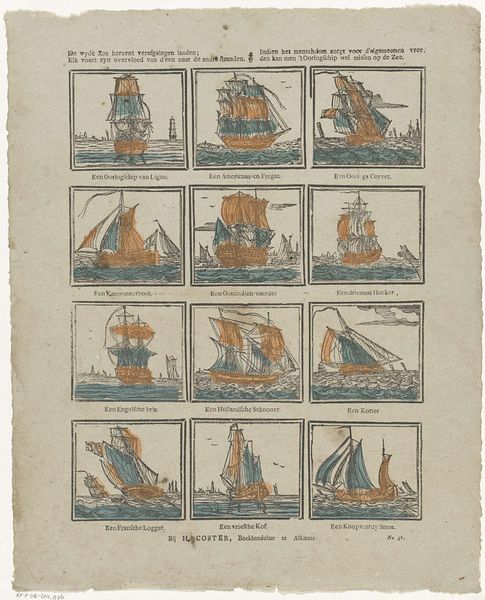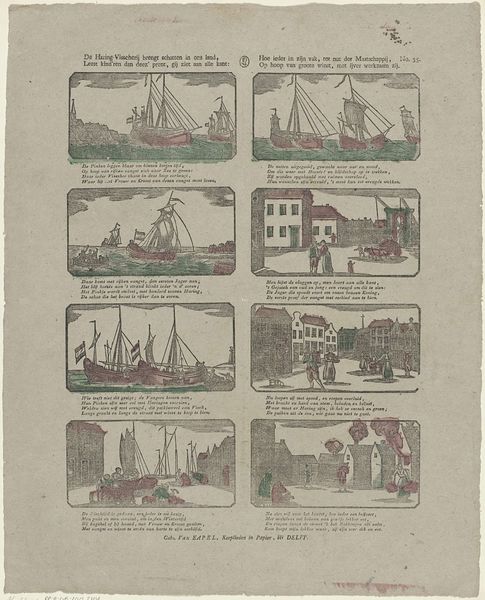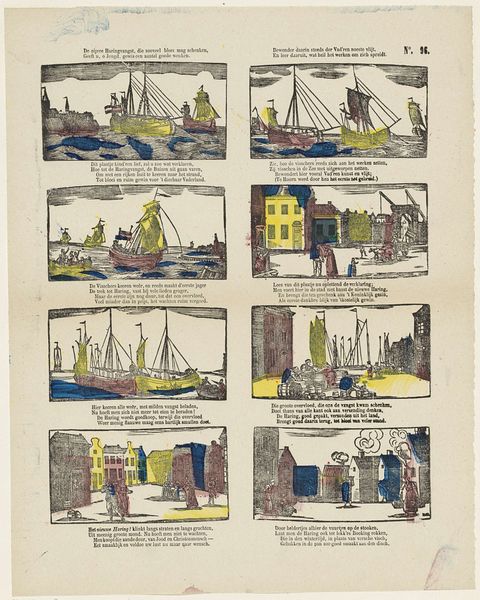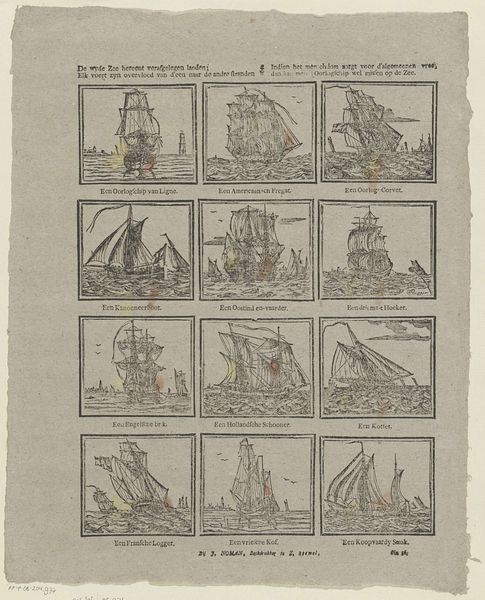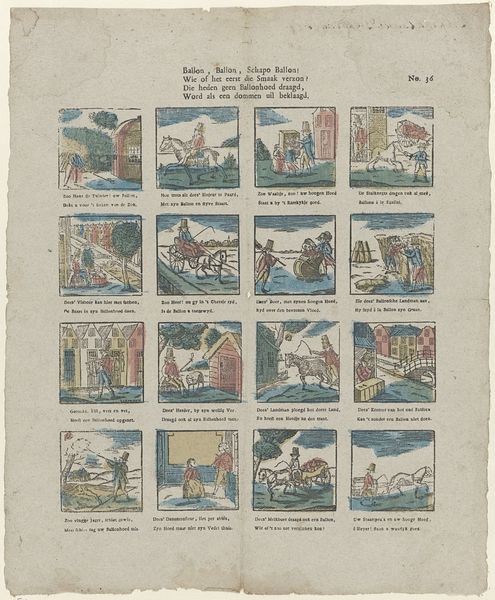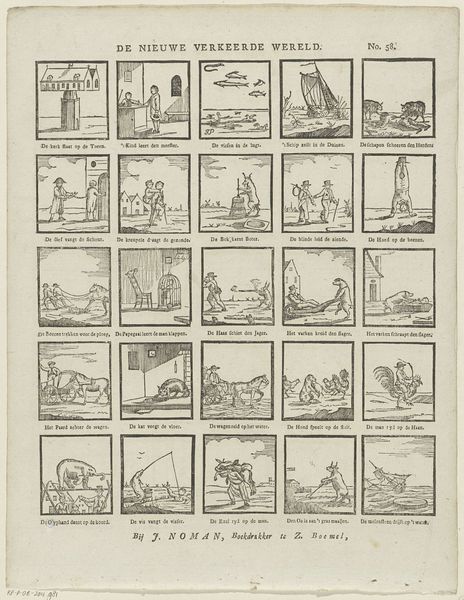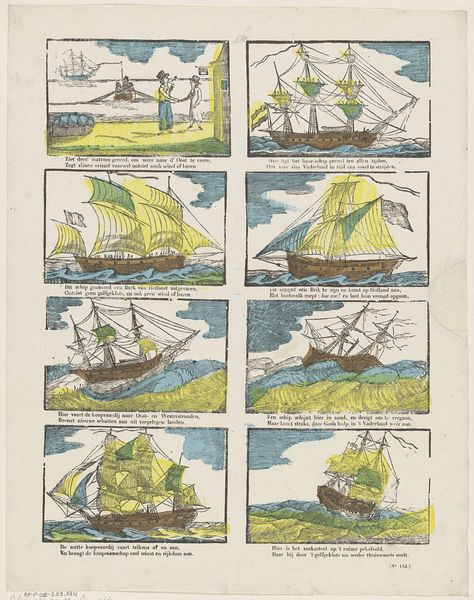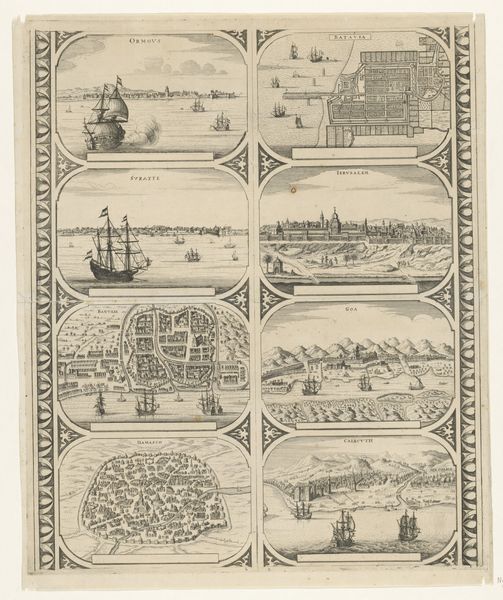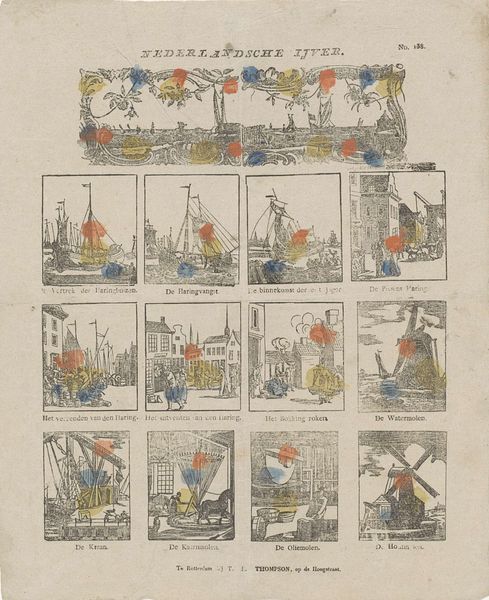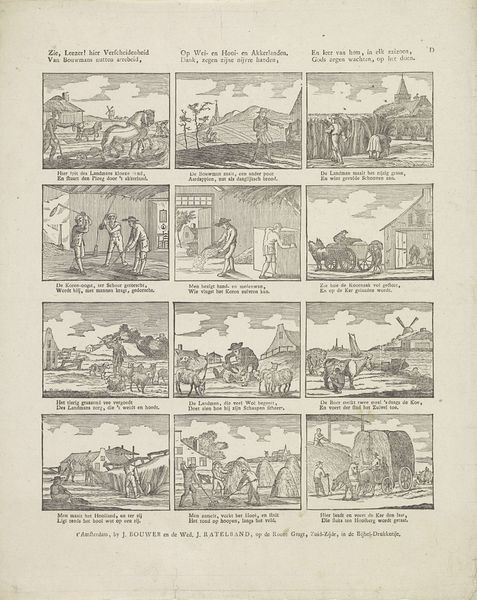
print, engraving
#
narrative-art
#
dutch-golden-age
# print
#
landscape
#
genre-painting
#
engraving
Dimensions: height 406 mm, width 335 mm
Copyright: Rijks Museum: Open Domain
Curator: Jacob Plügger's engraving, "De haring-vissery," dating from the early 19th century and residing here at the Rijksmuseum, presents a captivating look at herring fishing. Editor: My first impression is that this series of scenes creates an overall feeling of systematic industry—like a flowchart for a community’s lifeblood. Curator: Indeed. Plügger uses a grid-like arrangement of twelve individual vignettes, which methodically narrates the entire process of herring fishing. It showcases a sequence, beginning with preparation and culminating in the processing of the catch. The formal structure immediately catches my eye. Editor: The chronological element speaks volumes. Each stage reflects labor—not just of the fishermen at sea but of the ropemakers, the net menders, and those back on shore processing and packing the fish. The image underlines the community investment and economic structure deeply intertwined with the natural cycles of the sea. What's the story behind its creation? Curator: As a print, this artwork has a clear relationship with Dutch Golden Age genre painting—we see the influence of meticulous details from earlier depictions of everyday life. This piece serves a double purpose—not just visual documentation but also widespread circulation among the public. Editor: Agreed. The composition emphasizes how the social fabric and gendered roles in Dutch society relied significantly upon such labor practices during this period. And beyond that, considering how engravings allowed the dissemination of cultural narratives among various social strata during the time... Curator: Ultimately, both the careful arrangement of imagery and clarity in its engraved linework facilitate our modern understanding— Editor: Showing us that we can consider both structure and meaning, both labor and distribution of that labor through print media.
Comments
No comments
Be the first to comment and join the conversation on the ultimate creative platform.
